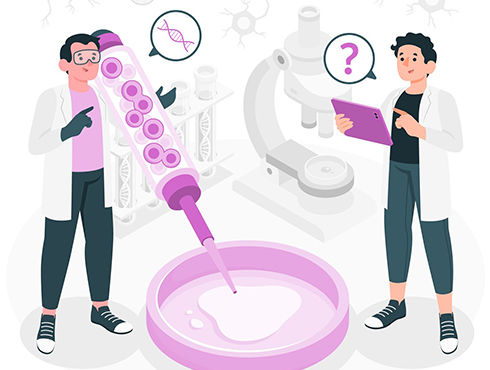Understanding Azoospermia: Causes, Diagnosis, and Treatment Options
- toshib55
- Feb 8, 2024
- 2 min read
Updated: Dec 11, 2024
Introduction
Welcome to Evara Fertility Centre, your trusted destination for comprehensive fertility care. In this blog post, we delve into the topic of azoospermia, a condition that affects male fertility. From understanding its causes to exploring diagnosis and treatment options, we aim to provide valuable insights to individuals and couples navigating fertility challenges.

What is Azoospermia?
Azoospermia is a medical condition characterized by the absence of sperm in the ejaculate. It is a significant factor contributing to male infertility and affects approximately 1% of the male population. Despite the absence of sperm in the ejaculate, individuals with azoospermia may still have viable sperm in their testes, which can be retrieved for assisted reproductive techniques such as IVF (In Vitro Fertilization) with ICSI (Intracytoplasmic Sperm Injection).
Causes of Azoospermia
Azoospermia can be classified into two main types: obstructive azoospermia and non-obstructive azoospermia. Obstructive azoospermia occurs when there is a blockage or obstruction in the reproductive tract, preventing sperm from being ejaculated. Common causes include congenital abnormalities, previous infections, or surgical procedures such as vasectomy. Non-obstructive azoospermia, on the other hand, results from problems with sperm production within the testes. Causes may include hormonal imbalances, genetic factors, testicular injury, or certain medical conditions.
Diagnosis of Azoospermia
Diagnosing azoospermia typically involves a comprehensive evaluation by a fertility specialist. This may include a thorough medical history, physical examination, semen analysis, hormonal testing, and imaging studies such as ultrasound. In cases of azoospermia, further evaluation may be necessary to determine the underlying cause and guide treatment planning.
Treatment Options for Azoospermia
The treatment approach for azoospermia depends on the underlying cause and type of the condition. For obstructive azoospermia, surgical interventions such as vasectomy reversal or sperm retrieval procedures (e.g., PESA, TESE) may be recommended to retrieve viable sperm from the reproductive tract. In cases of non-obstructive azoospermia, treatment options may include hormonal therapy, lifestyle modifications, or assisted reproductive techniques such as IVF with ICSI using surgically retrieved sperm.
FAQs About Azoospermia
Can azoospermia be cured?
The treatment of azoospermia depends on the underlying cause. While some cases may be reversible with appropriate interventions, others may require assisted reproductive techniques to achieve pregnancy.
Is there a genetic component to azoospermia?
Yes, certain genetic factors can predispose individuals to azoospermia or other forms of male infertility. Genetic testing may be recommended to identify underlying genetic abnormalities that may impact fertility.
What are the success rates of treatment for azoospermia?
Success rates of treatment for azoospermia vary depending on factors such as the underlying cause, type of treatment, and individual patient factors. Your fertility specialist can provide personalized guidance based on your specific situation.
Can men with azoospermia father biological children?
Yes, with advancements in assisted reproductive technologies such as IVF with ICSI, men with azoospermia may still have the opportunity to father biological children using surgically retrieved sperm.
Conclusion
At Evara, we understand the challenges associated with azoospermia and are dedicated to providing compassionate care and personalized treatment solutions to help individuals and couples achieve their dream of parenthood. If you have concerns about male infertility or would like to learn more about our fertility services, we encourage you to schedule a consultation with our experienced fertility specialists. Your journey to parenthood begins here.

Comments